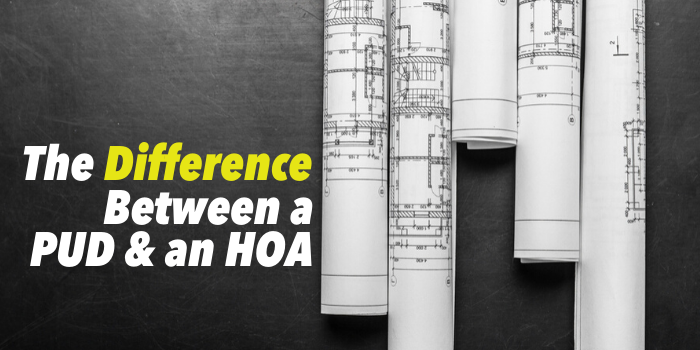If you’re in the market for real estate in an urban area, there’s a good chance you’ve seen listings that state the property is part of a PUD, or Planned Unit Development. Many potential buyers are unsure of the difference between a PUD and an HOA and why this may be pertinent to their purchase. We’ll review those details for you here:
What is a PUD?
A Planned Urban Development is akin to a small self-contained town. PUDs often take the form of a condominium building, but also include single-family and townhome communities. PUDs usually include several amenities and can include both residential and commercial units.
How is a PUD Different from an HOA?
There are several similarities and differences between a PUD and an HOA. A PUD is a community in which individual unit owners have ownership of their home, their lot, and the common area. The difference between an HOA-run condo townhome and a PUD townhome is who owns the land on which the structure sits.
In a condo situation, the association owns the land. In a PUD, the homeowner owns the land and is free to use the land more or less when and how they wish. Although, as within an HOA community, the PUD may come with certain rules that the homeowner must abide by in order to maintain a certain standard within the community.
A PUD is operated by an HOA and, as such, it is governed the same as any other HOA community. All residents are required to pay fees and abide by community rules. It is important for potential buyers to know that PUDs do not have to be FHA approved; only condominiums need FHA approval.
Pros and Cons to Both
The biggest pro of living in a planned unit development is the convenience. PUDs often include many private amenities, often going above and beyond the usual pool, gym, and parks. They may include a grocery or drug store, restaurants, privately owned roads, 24-hour security, or a variety of other services. Additionally, all common area maintenance is generally taken care of. This sometimes even includes home exteriors and/or yards.
There are typically guidelines or restrictions pertaining to the home exteriors, parking, and pet ownership, among other things, although such guidelines may also apply to homes within an HOA. The downside to these guidelines that is unique to a PUD is that although the homeowner owns the title to the home and the property, they don’t have full autonomy to use the property the way they want. Another downside is that homes are often much closer to each other, compared to a traditional neighborhood.
Because it is self-governed, an HOA is run largely by volunteers. Furthermore, the community regulations may seem restrictive to some homeowners.
Related: Fidelity Insurance for your HOA
If you’re planning to purchase new real estate, it’s important to understand the difference between a Planned Unit Development and a Homeowners Association to ensure that you purchase in the type of community that will best suit your needs.







